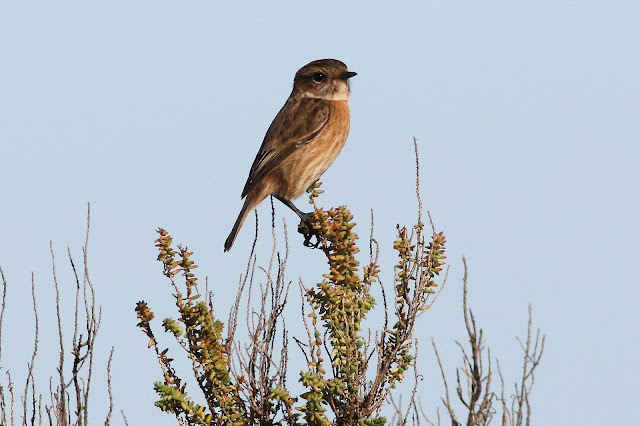4th November 2020
Still a bit early in the season for large numbers of waders, but time for our first winter visit to East Mersea. No sign of the male Brambling that over the last couple of days had been feeding on the Rowan berries in the car park so time for a stroll down the eastern path past the hide. Just the usual suspects on the pond including a collection of roosting Little Egrets, with one or two feeding around the margins.
The grazing fields are normally flooded at this time of the year, but the low rain fall has lowered the water table to such an extent that even the recent downpours have had little effect. This has significantly reduced the numbers of waders here and only a single flock of 10 Black-tailed Godwits were present near the borrow-dyke.
Thankfully Wigeon numbers were building up as normal.
There were few waders on the beach and these were constantly on the move and seemed to be going into roost early. The only species that stayed put were a dozen or so Ringed Plovers.
Brent Geese are now in their hundreds and were feeding on the edge of the incoming tide before flying on to the grazing meadows. I always enjoy photographing them against a back-drop of Brightingsea beach huts.
Now on to Stone Point where one of the resident Wrens was enjoying the sun on one of the Suaeda bushes, which are also used as look-out posts for a pair of Stonechats.
A couple of Rock Pipits were flying round calling, but only one landed nearby and was hugging the foliage on the shore which made photography difficult.
However, the most numerous passerine today by far were the dozen or so Reed Buntings which had presumably moved out from the neighbouring farmland. Always a joy to photograph.
I hope they were keeping an eye out for this Sparrowhawk which was circling high overhead.
So how were the waders doing? It is always very noticeable on Mersea that the Redshanks seem to keep to themselves and tend not to mix with the other waders and this was also true today where just a few singles were feeding on the mud by The Point, well away from the large flocks on the edge of the incoming tide.
As the tide rolled in there was a lot of movement as flocks of Dunlin flew into roost as the mud in the estuary got covered.
There was very little diversity today with just Dunlins and Grey Plovers being present, and although numbers are only just starting to build up, it is still an amazing spectacle.
Just look at those Grey Plovers.
Already looking forward to our next visit after lock-down.








































No comments:
Post a Comment
Note: only a member of this blog may post a comment.